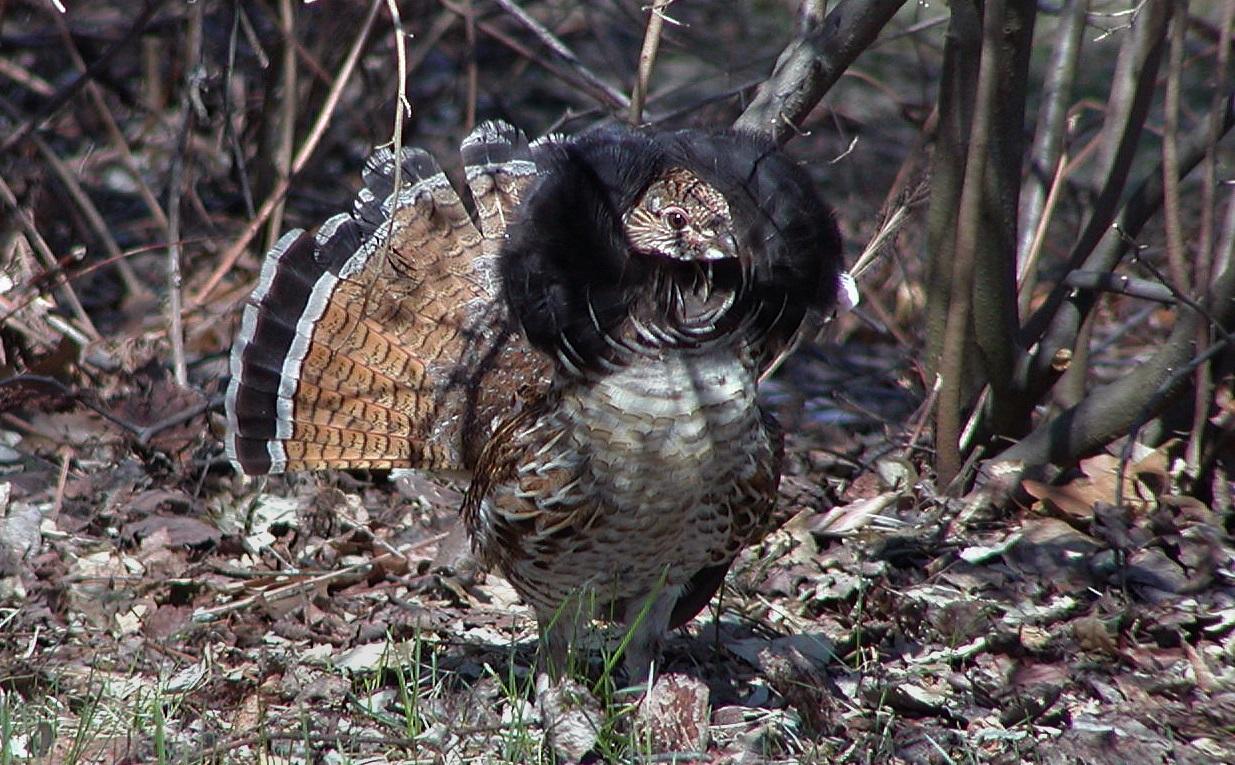- Division of Fisheries and Wildlife
Media Contact
Media Contact, MassWildlife

“Everybody knows that the autumn landscape in the northwoods is the land, plus a red maple, plus a ruffed grouse. In terms of conventional physics, the grouse represents only a millionth of either mass or the energy of an acre. Yet, subtract the grouse and the whole thing is dead”.
–Aldo Leopold, A Sand County Almanac
Aldo Leopold the father of wildlife management, recognized the importance of the ruffed grouse as an indicator of a healthy ecosystem. Grouse thrive in areas with a patchwork of young forest habitat of varying ages, overgrown fields, and mature woods. In Massachusetts, the ideal habitat mix can be hard to come by, but MassWildlife’s Habitat Program is working to change that on state lands.
Cover for grouse has been described by hunters as “thick and brushy places that are hard to swing a gun and challenge the toughest dog,” but it’s much more. Grouse need a variety of young forests between 1 and 40 years old in patches ranging from 10 to 40 acres with mature forest and grassy openings nearby. Dense young forests of sapling trees ranging in size from the width of a pencil to as wide as your forearm provide the safety grouse need from predators like hawks. Downed logs or stone walls provide critical drumming sites for male grouse to announce their courtship ritual in spring.
In addition to cover, good grouse habitat provides nutritious food—especially during the winter months. A large part of a grouse’s diet comes from the buds and catkins of aspen, birch, alder, and cherry saplings. Grouse also rely on food from soft mast-producing trees and shrubs like apple, blueberry, grape, high bush cranberry, and hawthorn along with hard mast like acorns, hazelnuts, and beech nuts. Overgrown, brushy fields provide an abundance of protein-rich insects in the summer for developing grouse chicks.
The combination of habitat types needed for quality grouse habitat has become more and more scarce in Massachusetts over the decades due to development and other land use changes. With the goal of reversing these declines, MassWildlife’s Habitat Program actively manages and promotes patchy young forest habitat on some of its Wildlife Management Areas (WMAs) that grouse—and many other declining wildlife species—depend on. Through limited and strategic timber harvests, MassWildlife emulates the conditions of natural disturbance events usually caused by wind, ice, and fire. These operations remove tall trees from an area but leave oaks and cherries that are important to wildlife. Some logs are left on the ground for grouse drumming logs. Because this habitat is only beneficial to grouse for a short time (20–40 years), periodic timber harvesting is conducted on WMAs to create new patches of young forest. MassWildlife also uses prescribed fire as a tool to promote the growth of aspen and to create and maintain the shrubland habitat that provides cover and valuable food for grouse. These practices have been extremely successful in maintaining healthy grouse populations where habitat management has occurred.
To find good grouse hunting, try these Wildlife Management Areas:
